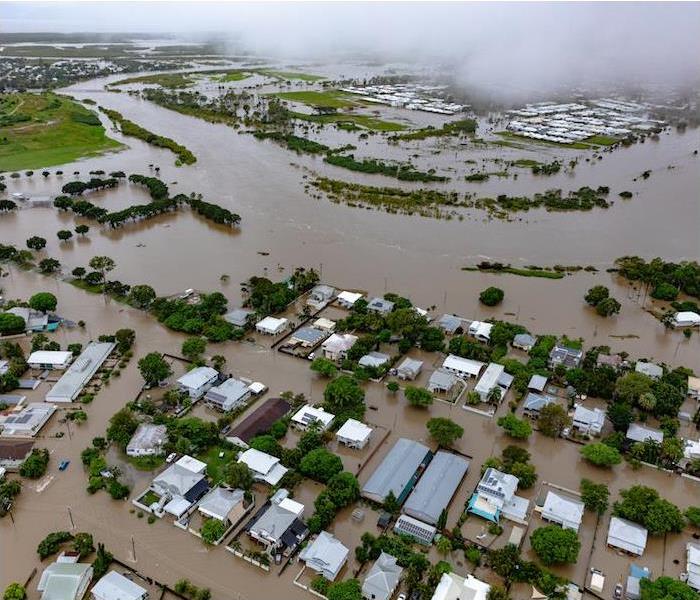
Step 4: Drying and Dehumidification
Our Water Damage Restoration Process
Once the excess water has been removed, it doesn't mean the job is done. The floors and walls from your home or business may appear dry, but in some cases, your home can still have remaining moisture. A quick inspection using our moisture meter will reveal they are wet to the touch. Nearly all building materials like wood, drywall, and flooring materials are porous and therefore retain water. This retained water can cause the materials to break down, warp, or cause mold damage. If we find moisture remaining through your flooring or walls, it is important for us to find the areas that are still affected so we can begin the proper drying your home needs immediately. The quicker we detect it, the more we prevent mold from spreading throughout your walls and flooring. After this is done, we then move on to step 5.
Drying / Dehumidification
Our Professionals will use room measurements, temperature, and relative humidity to determine the optimal number of air movers and dehumidifiers to dry your home or business. We’ll carefully monitor the progress using moisture meters until the materials return to acceptable drying goals.
- Use Dehumidification Equipment
- Use Monitoring Equipment to Track Progress
Monitor Floor and Walls
We check the moisture levels to monitor the drying process.
- Monitor Floors
- Monitor Walls
Drying Equipment
- Industrial-grade dehumidifiers help prevent secondary water damage like swelling and warping of floors, walls, and furniture.
- High-speed air movers create airflow across walls, carpets, pads, and furniture, which accelerates the evaporation of moisture.






 24/7 Emergency Service
24/7 Emergency Service





